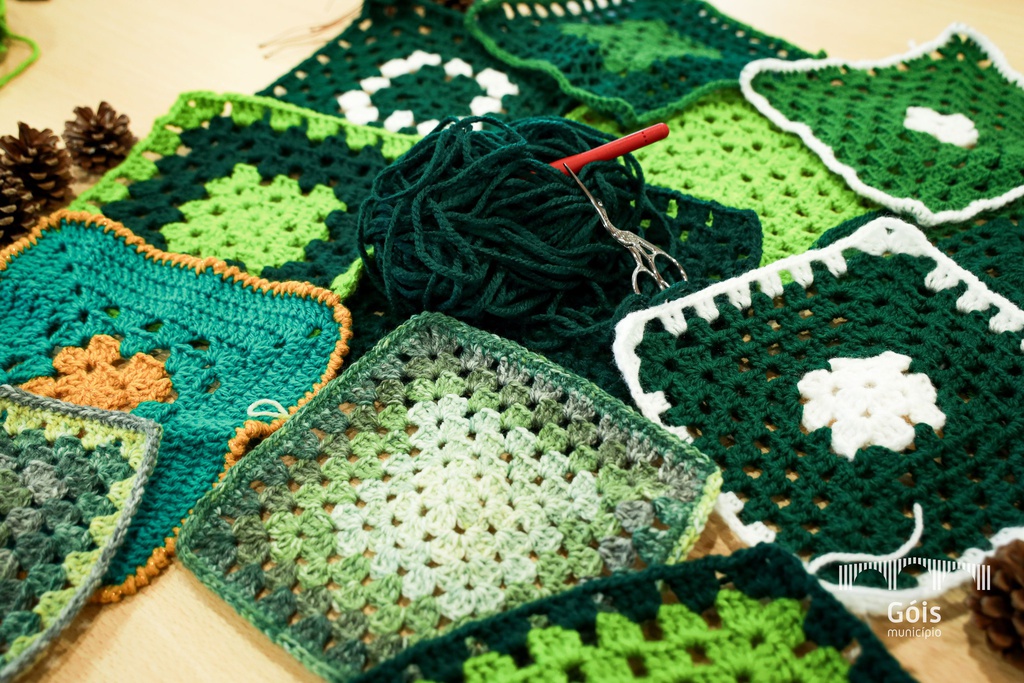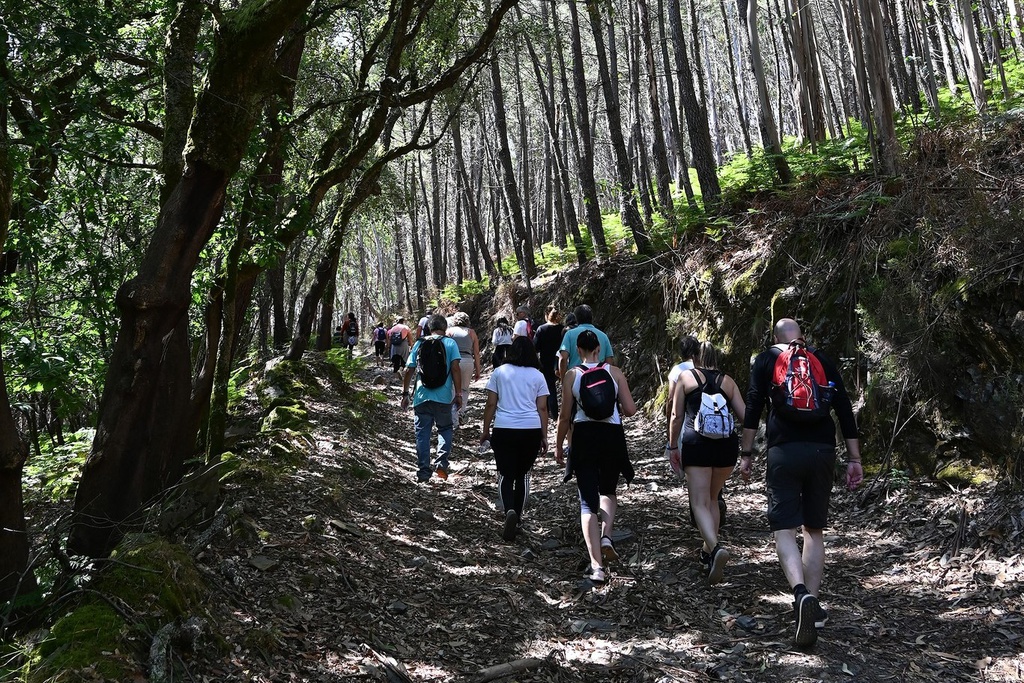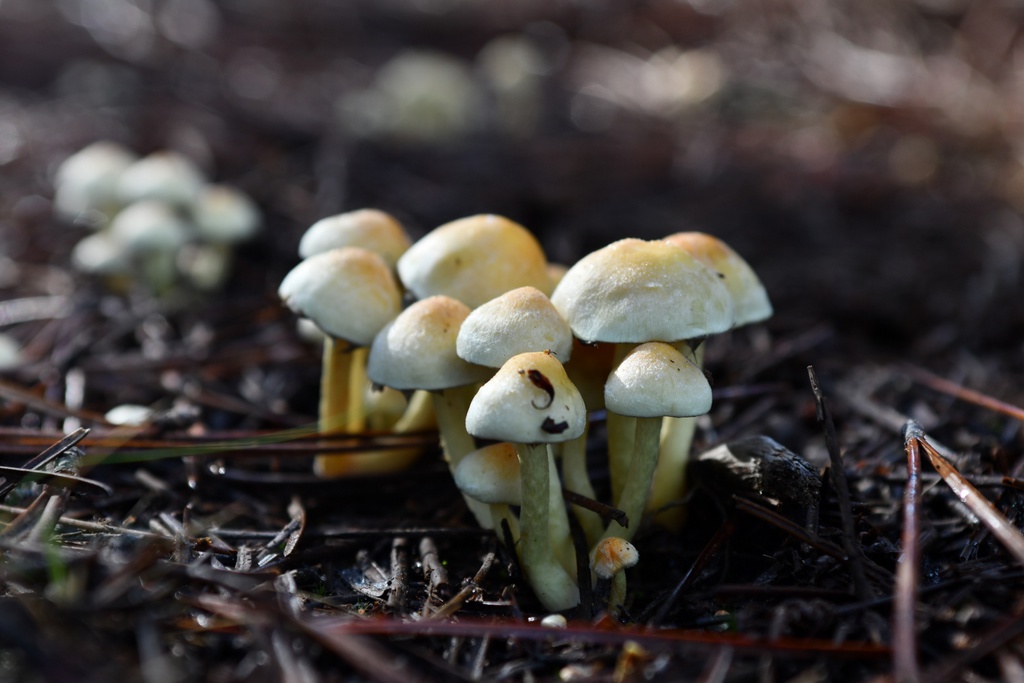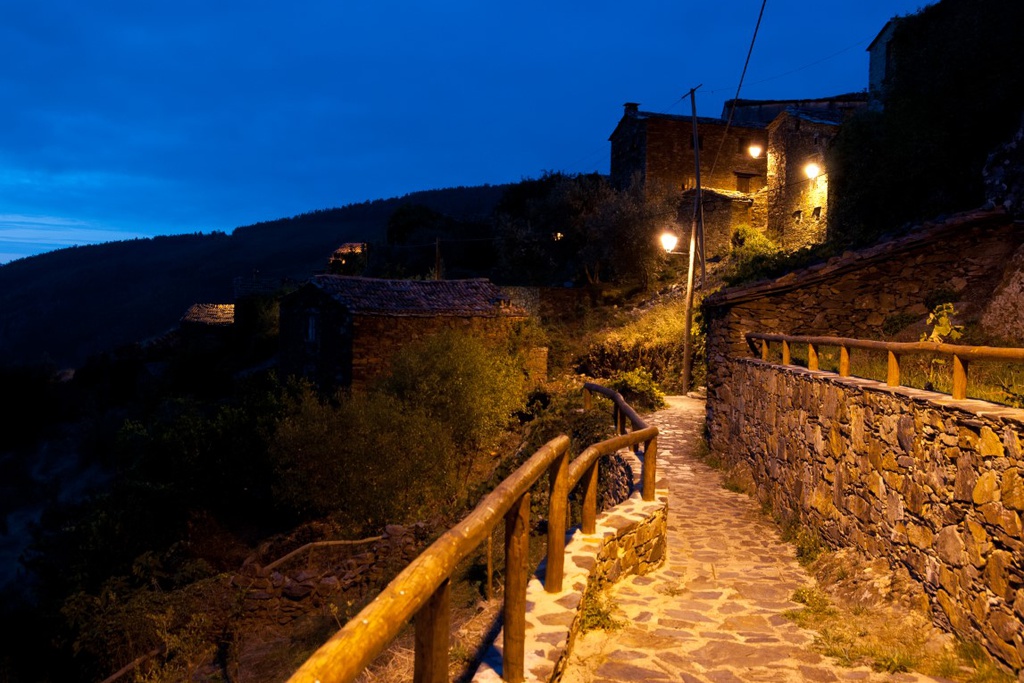Art, landscape, culture, nature, creativity, experimentation. It was among these elements that we were from March 30 to April 2, thus launching the participation of the Aldeias do Xisto in the Creative Europe Project, submitted by the Entre Serras Project, with the theme "Inhabiting and Moving in Mountain Territories."
It was in the Dignes-les-Bains region, France, that we gathered with the French and Spanish partners with whom we will, over the next three years, traverse a path whose scenery is the nature that surrounds us and is intended to be an open-air art gallery.
Different projects, various entities, diverse contexts. But also common desires: to continue advocating for the important role of rurality in tourism and territorial development and to invest in projects that, through art, encourage people's connection to places, land, landscape, and surrounding nature, in a sustainable, useful, and lasting way.
This was a trip to France, but it could have been to another place. Conversations among the various participants, alternating between native languages in a convivial atmosphere (and sometimes a mix of everything), quickly took us to Portugal, Spain, and Brazil, in a rich and generous sharing of experiences that show and prove that each part is important for the whole.
Over three days, we visited outdoor artworks, exhibitions, museums, and family businesses, walked ancient trails, observed the mountains, met artists who, in different ways, use nature as their raw material, met with local leaders, heard stories from this and other times, shared experiences and knowledge. We were sure that we are on the right path, and above all, we were pleased to know that we are not alone.
In addition to Portugal, the project, led by the Polytechnic Institute of Lisbon through the Landscape Museum, has partners from Spain and France. On the Portuguese side, Aldeias do Xisto, Geopark Estrela, and the Municipality of Castelo Branco through Fábrica da Criatividade are involved. The French partners include the Municipality of Digne-les-Bains in the Alpes de Haute Provence, through CAIRN - Centre d'Art Informel de Recherche sur la Nature, Maison Alexandra David-Neel, and Musée Gassendi, as well as the École Supérieure d'Art d'Aix-en-Provence. The Spanish partners are the Vostell Malpartida Museum and the City Council of Malpartida de Cáceres through the Center for Livestock Pathways.
Within the scope of this project, between 2023 and 2026, Aldeias do Xisto will host artistic residencies and workshops, reinforcing their role as a living laboratory and a territory open to experimentation. The connection to nature and communities, questioning the landscape, and the intersection between art and rurality remain the guiding principles shaping the strategy for artistic engagement in the territory.
LOGBOOK
Day 1 | March 30
We flew early to Marseille, where we met with our Spanish partners. From there, we headed to the hostel that welcomed us in Bois Gonin, at the foot of one of the many mountains surrounding the region. Along the way, we made a stop in Aix-en-Provence to visit the École Supérieure d'Art d'Aix-en-Provence. At the end of the day, there was still time for a stroll in the surroundings of the accommodation, where we could witness the grandeur of the mountain and its strong influence on the landscape. The cozy bar in the village of Auzet set the stage for the presentation of the program and the partners who, for the first time, gathered in person.
Day 2 | March 31
The day began at CAIRN - Centre d'Art Informel de Recherche sur la Nature, with a visit to the exhibition by Hamish Fulton, an artist who creates art based on what he sees and feels during his walks without interfering with the landscape or nature. In this exhibition, he presents works related to a sacred walk - Kora - through Tibet, taking on an activist role by, for example, revealing stories of repression and attacks on freedom of expression unknown in the West.
Next was a stroll through the Haute-Provence Geopark. In a more or less free itinerary, we wandered through the trails and observed how, by harnessing natural resources, art blends with the landscape without becoming invasive or artificial.
Afterward, we visited the work "Le Bassin de la Bléone Roches et Matériaux" (Rocks and Materials of the Bléone Basin) by Lara Almarcegui. Integrated into public space, this project mathematizes the images that usually come to mind when we think of a river. The calculations, performed by the Bureau of Geological and Mining Research, involved measurements by drones equipped with radars. The numbers seen in the gallery image proved challenging to articulate with the "multilingual" team exchanging impressions on how to express them.
After lunch, it was time to visit the Alexandra David-Neel House, a eloquently guided journey through the life of an astonishing woman who refused to be confined by beliefs, traditions, or preconceived ideas and followed her path without hesitation. It wouldn't be bold to say that we all left impressed by the stories we heard there.
To conclude the day, we visited the thermal complex that hosted the first in-person meeting among all project partners. The action plan was analyzed, the strategy aligned, objectives were set, and doubts were clarified. In the end, the conviction that tackling the much to be done requires commitment prevailed.
Day 3 | April 1
We started with breakfast in Auzet. The former mayor of the village joined us, introducing the various projects he developed to attract more inhabitants. Agricultural exploration, the creation of activities such as the Music Center, mainly for the younger generation, and tourist infrastructure such as hostels and hiking trails, or even the encouragement of using the territory for scientific activities were some of the initiatives that led to an increase in the population from 30 to 100 in recent years, resulting in a rejuvenation of the community.
We headed towards Puimoisson for a picnic lunch integrated into the inauguration of the exhibition "Au-delà du paysage" by T. Roeskens and Elsa Noyons. This work, composed of several panels engraved on the walls of a chapel in the middle of a hill, shows paths used for transhumance, accompanied by phrases, confessions, and shares from various people who traversed them.
We then proceeded to Moustiers Sainte Marie, part of the network Les Plus Beaux Villages de France (The Most Beautiful Villages of France). Despite being relatively isolated, the streets were vibrant, thanks to commerce and visitors. The chapel of Notre-Dame de Beauvoir, atop one of the cliffs flanking the village, giving it an indescribable atmosphere, was one of our destinations.
To conclude the day, we visited the Monastère de Ségriès, a family and multi-generational project with almost three decades, starting with the restoration of an old monastery. With 26 rooms and the capacity to accommodate up to 80 people, various activities and themes are worked on here. From agricultural practices to hosting and organizing musical events, sustainability is always one of the present elements.
Day 4 | April 2
Before bidding farewell with a "see you soon," there was still time to stop and marvel at a gorge that always crossed our path and the more than 1500 ammonites discovered on a wall of about 320 square meters.
Text: Andreia Gonçalves

















































